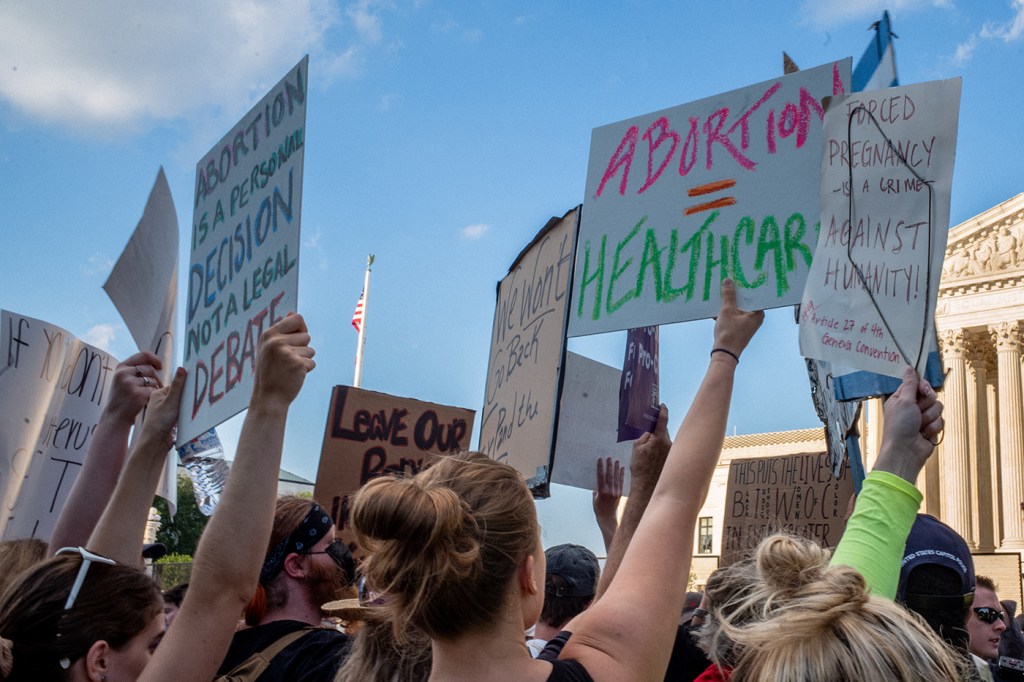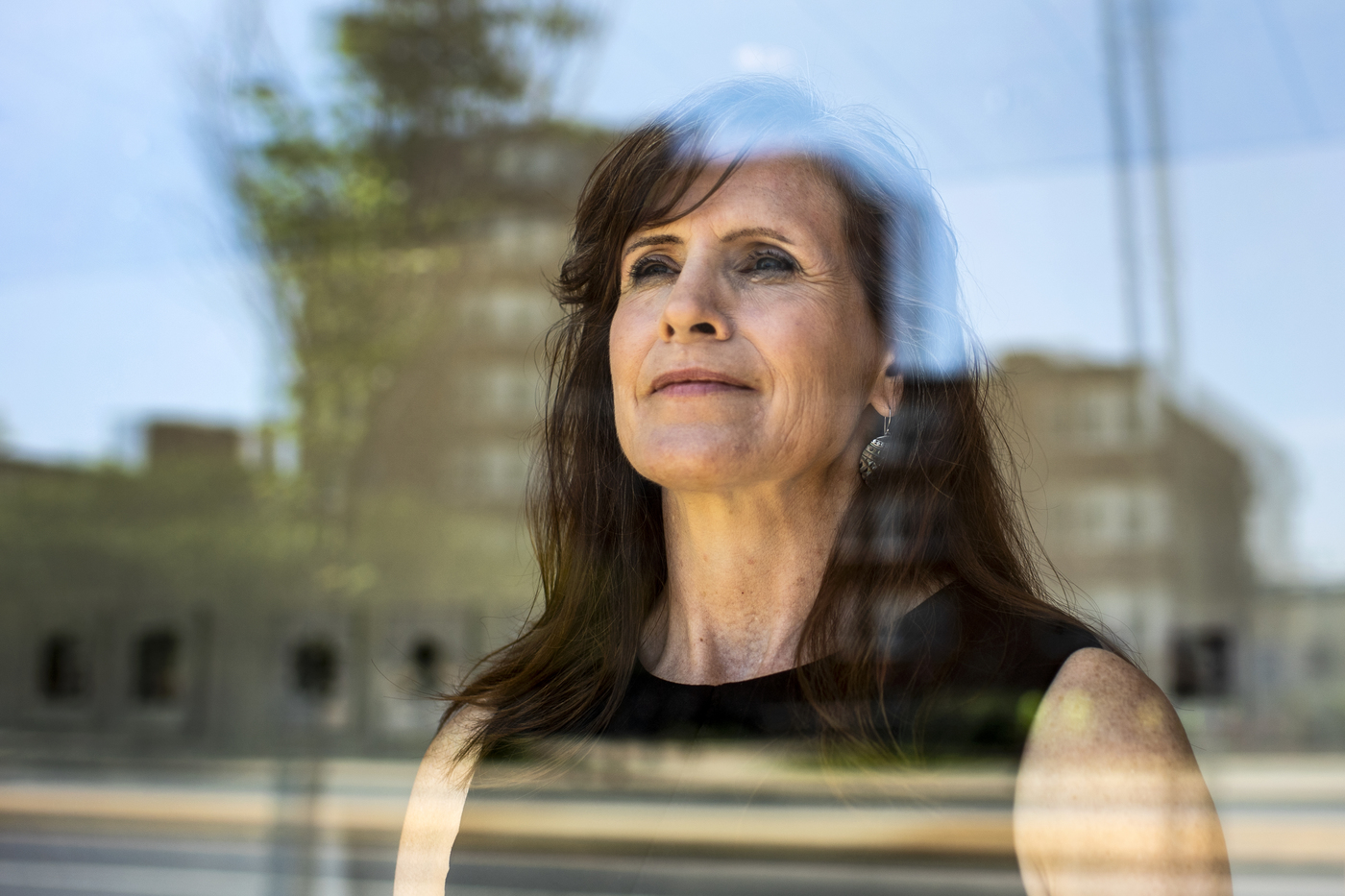Overturning Roe v. Wade will put even more of an economic burden on women, Northeastern economist says

The Supreme Court’s decision to overturn Roe v. Wade last week could have devastating economic effects for women–especially low-income women of color–that will have both short- and long-term impacts, Alicia Modestino, associate professor of public policy and urban affairs and economics, said.
Without Roe v. Wade, which provided the constitutional right to abortion during the first two trimesters of pregnancy, it is now open season for states to determine their own abortion laws. Twenty-two states have already announced plans to outlaw or restrict abortion in the aftermath of the Supreme Court’s ruling, and, Modestino said, the economic impact on women, families and even states could be significant, especially with the current state of inflation.

According to Modestino, there are direct short-term costs for those seeking to get an abortion, like travel and medical care, but also long-term impacts in terms of earnings, job loss, educational attainment and bankruptcy. Part of the cost comes from the lack of social support structures for those giving birth in the U.S. Modestino referred to the Supreme Court’s decision as an “unfunded mandate,” one that requires citizens to do something, in this case to not terminate their pregnancies, without providing financial support to do so.
“It is literally an unfunded mandate to women and their families to have to bear that personal cost now,” Modestino said. “We have no paid maternity leave. We lack any formal paid leave, and so 80% of workers don’t even have paid formal leave through their employer. We know that childcare costs, on average, $15,000 a year for an infant at this point, and that assumes that you can find childcare.”
There are so-called “childcare deserts,” Modestino said, where affordable childcare is particularly difficult to find. This is most common in low-income areas, which is emblematic of a larger concern around the Supreme Court’s decision: its disproportionate impact on low-income women and women of color. Not only are a quarter of women in the U.S. likely to obtain an abortion at some point in their life, but Modestino said the majority are low-income women of color who are already mothers.
“Women are huge financial contributors to their family, so it’s not just women that we’re talking about,” Modestino said. “We’re talking about the entire family unit, and because 60% of them are moms, that means we’re affecting other children. We’re putting other children in poverty and other children in jeopardy.”
The potential economic ramifications of the Supreme Court’s decision are well-documented. More than 150 economists and researchers filed an amicus brief with the court that aimed to show the connection between abortion access and economic opportunity for women. In the Turnaway Study, the University of California, San Francisco also chronicled, over the course of several years, the journeys of 1,000 women who were trying to get an abortion. Some were able to receive an abortion one day before the gestational limit in their state, while others were turned away because they were one day past the gestational limit.
What researchers found was a “huge divergence in terms of employment, education, even just their financial circumstances, like what happens in terms of their ability to get credit and to be able to survive financially.” Women who were unable to get an abortion and gave birth experienced an increase in household poverty that lasted four years longer than those who received an abortion. In addition, those who were denied an abortion had lower credit scores and an 81% increase in records related to bankruptcy, evictions and court judgements over those who did get an abortion.
In light of the Supreme Court’s decision, Modestino said that you only need to look at the response from corporations like Disney, Apple and Dick’s Sporting Goods to see how evident the looming economic impact will be. Disney and Apple reiterated that they will continue to cover travel costs for employees who need to go out of state to get an abortion. Modestino noted that this is not necessarily corporate altruism but companies reading the tea leaves.
“Women are their employees,” Modestino said. “They want their employees to be able to make the most efficient decision for them and to get back to work and to be productive. … They’re willing to actually pay those short-term costs for employees to get an abortion to avoid those longer-term costs that they know are there.”
The cost could also extend to states that end up banning or restricting abortion.
According to the Institute for Women’s Policy Research, state-level abortion restrictions could cost as much as $105 billion per year. Meanwhile, an analysis done by the Guttmacher Institute, a research and policy organization that aims to further sexual and reproductive rights in the U.S., showed that states with liberal abortion policies actually save money. For every tax dollar spent to pay for abortions for low-income women, the institute found that about $4 was saved by public medical and welfare providers. This included Medicaid expenditures for prenatal care, delivery and postnatal care, early childcare and food stamps. This varied from state to state, from a 9-to-1 benefit-to-cost ratio in Massachusetts to 2-to-1 ratio in Hawaii. The institute’s analysis showed that if abortions were publicly funded in every state for two years, the country would save $339.6 million.
Modestino said the Supreme Court’s decision left her perplexed–not only because of the clear economic impact on women. She noted that abortion rates have actually been decreasing over the last 20 years, not due to restrictions but “more reliable contraception [and] more awareness.”
“I find it kind of crazy that the Supreme Court is choosing to make this decision at a moment in time when if you were worried about that cost of how many abortions there might be, [it] has actually been going down,” Modestino said.
For media inquiries, please contact Shannon Nargi at s.nargi@northeastern.edu or 617-373-5718.






